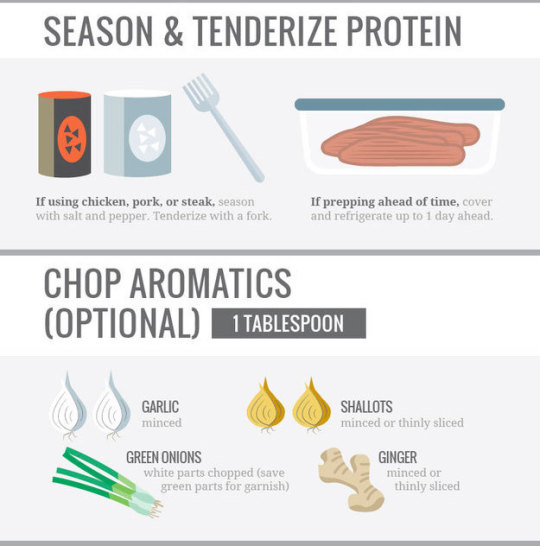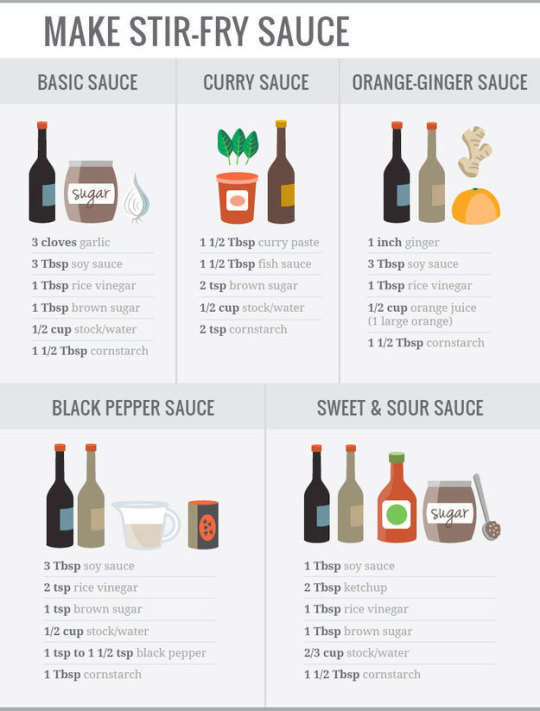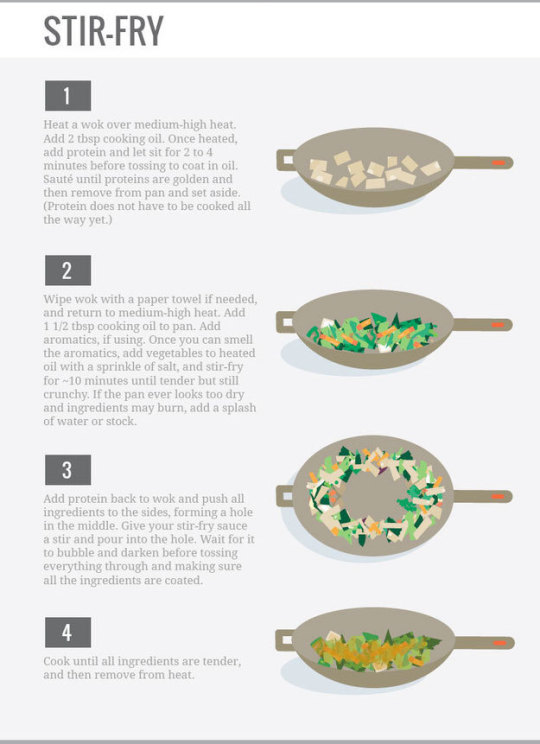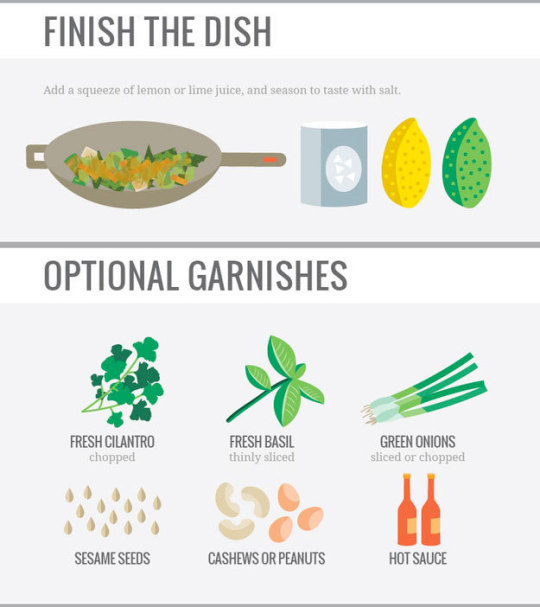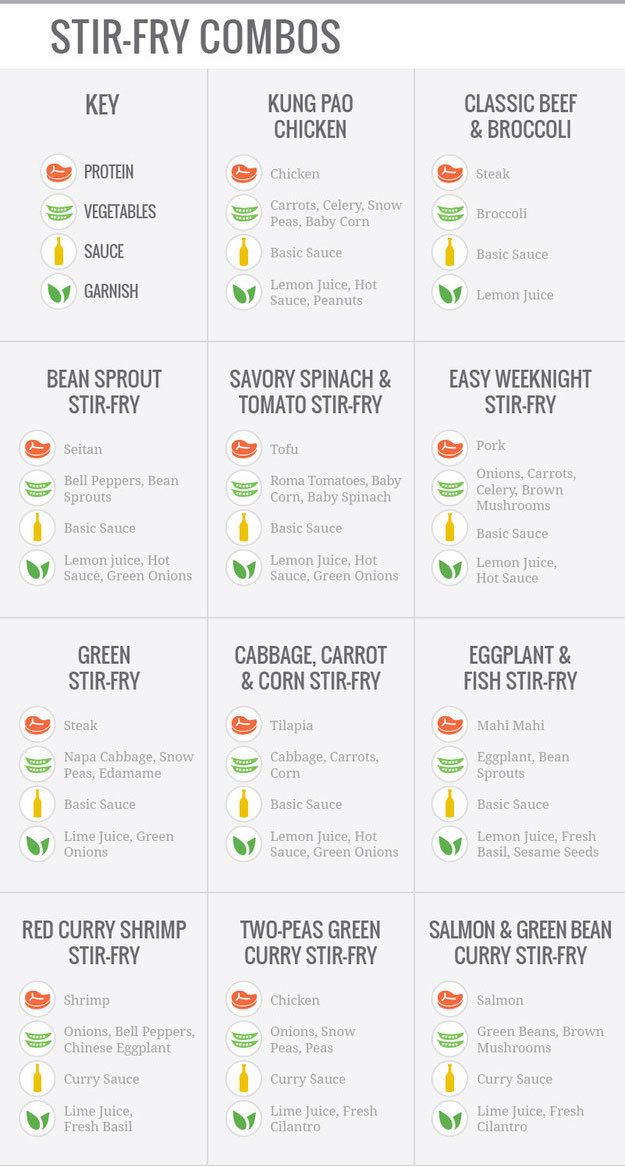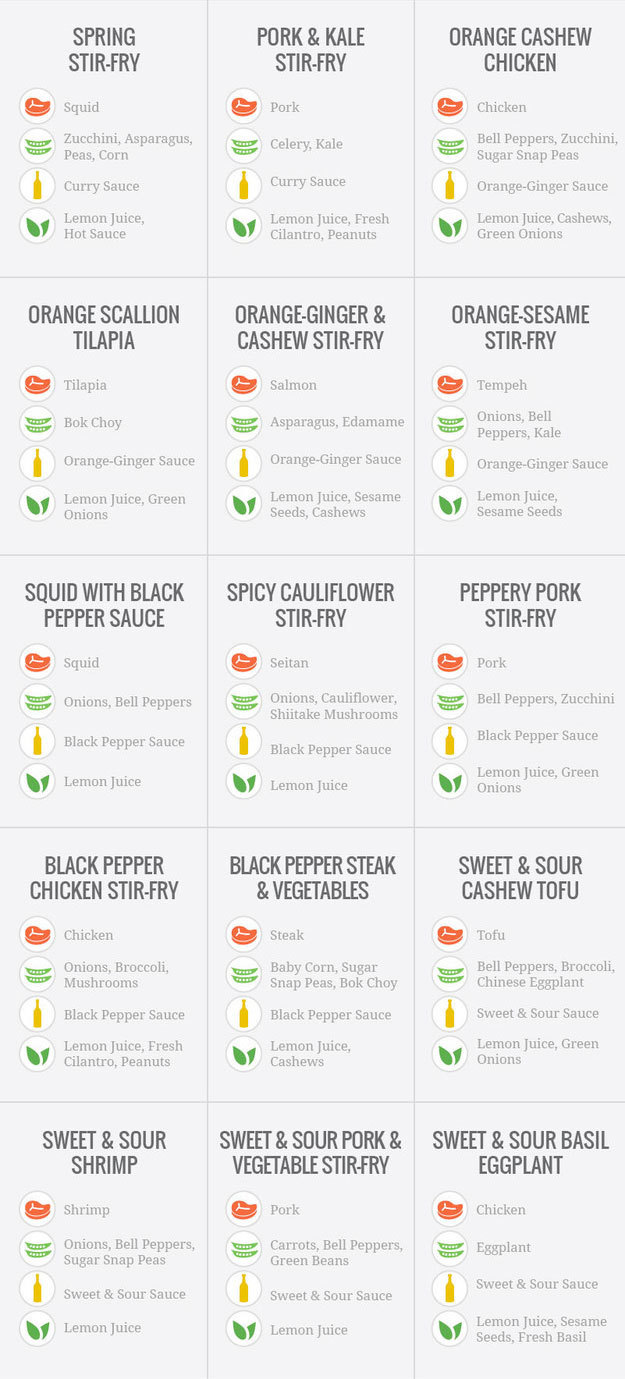I have a condition called POTS. I can't take medicine for it so I have to maintain a strict diet to function. I use this blog to record the recipes I use.
Don't wanna be here? Send us removal request.
Text
Prep Chicken
This is the chicken I use to put in most of the food I cook during the week. Cooking it all at once in a big batch at the start of the week is super helpful for cutting prep time elsewhere! I eyeball my ingredients to taste
Ingredients - a large packet of chicken breast (but any cut should be fine) - a large heaping spoonful of garlic (I use jarred for this but you can use less powder or cut fresh) - salt - pepper - paprika (optional, adds a smokey flavor to it) - lemon juice (fresh or pre-squeezed) - neutral oil (avocado, canola, vegetable, etc. NOT coconut, sesame, or olive)
Instructions 1. Rinse then cut your chicken. I like mine thinly cut so they cook faster. There is an image below the cut of how I cut it in order of cut orientation.
2. Put a large pan over medium to medium-high heat and pour in enough oil that it will coat all the chicken you have.
3. Add the heaping spoonful of garlic, then squeeze a generous amount of lemon juice into it (1:6 ratio of oil probably works).
4. While the garlic is starting to cook, salt and pepper the chicken so each piece will have enough to cover all sides. This is also when you add the paprika.
5. Add the chicken to the pan and mix to coat in oil, lemon, and garlic. Cook until chicken is cooked through.
In the fridge, you can marinate the chicken in lemon, salt, pepper, paprika, and cornstarch for a few hours before cooking in the garlic and oil. This helps the chicken absorb more flavor and be more tender after cooking.

When you cut the chicken the goal is to get it less dense so the pieces are smaller at the end, so sectioning it into slices is useful.
#recipe#recipes#cooking#chicken#meal prep#meal plan#food#pots#potsie#pots syndrome#dysautonomia#chronic illness#chronic illness cooking
3 notes
·
View notes
Text
When I managed to do the cooking thing but now have to do the dishes thing...

73 notes
·
View notes
Text
cooking while chronically ill
baking with arthritis or other chronic hand pain
living with chronic migraines
adhd meal plan
chronic pain tips
getting yourself to eat
84K notes
·
View notes
Text
October is Dysautonomia Awareness month and Vitassium has a 31 day challenge. And I want to participate but lack consistency so I’ll prob do them in clumps. Anyways here’s a screenshot of the list :)
See y’all in a few days!
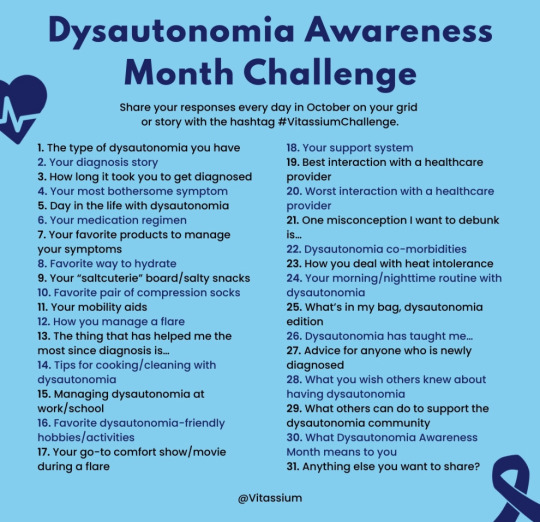
(I’m probably doing Inktober too but that won’t be posted here lol, it’ll be the month of consistency challenges)
50 notes
·
View notes
Text
Aglio e Olio
Spaghetti aglio e olio is a very simple pasta dish. To accommodate my health I have taken and adjusted the recipe.
Ingredients 1-2 cups of red lentil pasta (or another protein heavy GF pasta) 1-2 tablespoons of chopped garlic (I usually use jarred which isn't as strong as fresh so I use more of it) salt pepper parsley oregano crushed red peppers lemon juice olive oil
Instructions 1. Put a pot on to boil (I always start on high heat). Once boiling, add salt then stir in your red lentil pasta (I lower to medium heat so it doesn't over boil).
2. While the pasta is cooking, put on a pan with olive oil and the chopped garlic. This should work at medium or medium low heat depending on your burner.
3. Once the garlic is turning golden, remove from heat and add the crushed red peppers (optional for heat), salt, and pepper to preference.
4. Taste the pasta. When it is your ideal texture, cut the heat and strain it. Once strained, put the pasta in the pan with the oil and garlic and return it to low heat. (I do not strain it but use a cooking spoon with holes to place the pasta in the pan with the oil. This is one less dish to wash)
5. Sprinkle the oregano, parsley, and lemon juice to preference onto the pasta. Mix then serve hot.
Notes below the break line.
Authenticity has been pretty much torn apart by smarter people by now for its classism, racism, and general nonsense. Authenticity also only works as a social construct if you live in a metropolitan area and are able bodied (at least in the US). So now I will defend my deviations from the traditional recipe:
I use lentil pasta because I need protein with every meal or I burn out. Even non gluten carbs can be a trigger if I eat too much so the lentil pasta balances me out. You can also make the dish with any GF pasta and some chicken or steak. If you need a veggie, I suggest tossing some spinach into the pasta water right before you strain it. I have found Barilla has the best, most accessible red lentil AND gluten free pasta. I don't use cheese because pre-grated cheese in stores has a clumping agent in it and grating my own cheese is very taxing. If you can grate your cheese, I recommend looking up how best to integrate cheese into the dish. You can probably forgo the lemon juice and oregano if you can figure out the cheese. I use parsley and oregano because it is good. Remember that authenticity isn't real, let alone the goal when cooking at home. The goal is that it is something you can make and it taste good. That's all. I like oregano and parsley. If you like them, use them. You can also skip them if you don't like them. The same can be said for the lemon juice. You can also not use the red pepper if you don't like heat.
This is just the way I prepare it because it works for me and my situation. I hope other people with POTS or other chronic conditions get something out of this. Thank you for reading!
#recipe#recipes#cooking#spaghetti aglio e olio#aglio e olio#gluten free#POTS#pots syndrome#dysautonomia#chronic illness#food#pasta
4 notes
·
View notes
Text
Introduction
Hi, I'm Atlas (she/they/he). I love food but due to a health condition called POTS my options are more limited. I look for ways to make food that is still good and doesn't have the things that make me feel ill. I try to make my recipes accessible (physically, financially, and locally). Since I am based in a medium to large town in the US, my access to ingredients may vary greatly than others. These are just recipes that work for me given my situation that other people with POTS may find helpful. Learn more below the cut!
What is POTS? Postural orthostatic tachycardia syndrome (POTS) is a condition that causes a number of symptoms when you transition from lying down to standing up, such as a fast heart rate, dizziness and fatigue.
Water and salt are usually very important to POTS patients to help manage symptoms.
What are the rules of your diet? Not all people with POTS need to restrict their diets in the same way. We all have different triggers, though some are more common. The two most common triggers are gluten and caffeine. I only allow myself gluten or caffeine once or twice a month and when I do I drink a lot of water with it. The rest of the time, I do my best to avoid the following: - Gluten (wheat based baked goods, pasta, and packaged foods that shouldn't have wheat in them but do) - Caffeine (coffee, soda, chocolate, many teas) - Preservatives (a lot of deli meat, uncured meat, packaged meals, fast food)
What sort of food is left without those? Not a lot but also a lot. It limits me in going out to eat and it was very disheartening early in life to adjust. Not to mention it was difficult to maintain a healthy weight due to lacking options. As an adult, I have formed a lot more agency and I go to college in a larger city than the one I grew up in. My food options have diversified a lot because of that! Cities have more diverse food and it has put me in contact with foods that don't have wheat based diets! Rice, corn, and potatoes have been a god send. I am learning new ways to cook and ways that work for my health.
What about when fatigue hits? Meal prep is my friend! I cook at least two portions whenever I have the energy to cook. That way, I have food on hand when I inevitably feel too bad to hover over the stove.

#intro#pots#pots syndrome#dysautonomia#chronic illness#cooking#recipes#food#gluten free#caffeine free#preservative free
3 notes
·
View notes

